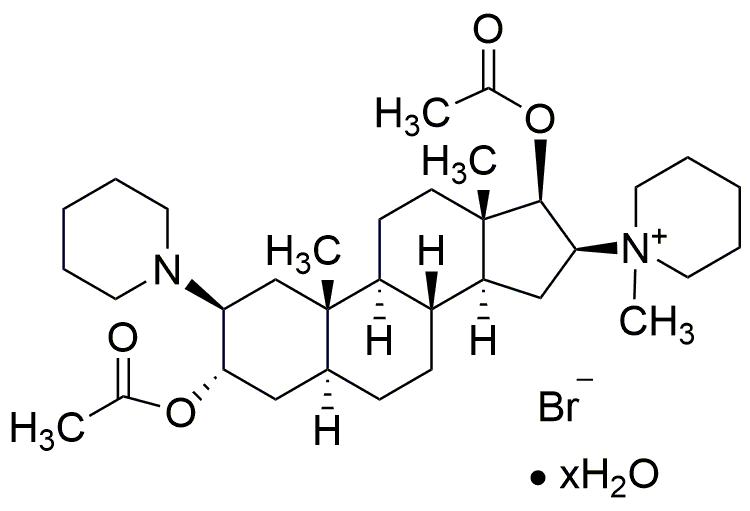Vecuronium bromide hydrate is widely utilized in research focused on:
- Anesthesia: It is primarily used as a neuromuscular blocker during surgical procedures, facilitating intubation and muscle relaxation without affecting consciousness.
- Critical Care Medicine: In intensive care settings, it helps manage patients on mechanical ventilation by providing muscle relaxation, allowing for better respiratory support.
- Pharmacological Research: Researchers use it to study neuromuscular transmission and the effects of muscle relaxants, contributing to the development of new anesthetic agents.
- Veterinary Medicine: It is also applied in veterinary practices for surgical procedures in animals, ensuring safe and effective muscle relaxation.
- Education and Training: Medical and nursing schools utilize it in simulation labs to train students on the administration of neuromuscular blockers and patient management during anesthesia.
General Information
Properties
Safety and Regulations
Applications
Vecuronium bromide hydrate is widely utilized in research focused on:
- Anesthesia: It is primarily used as a neuromuscular blocker during surgical procedures, facilitating intubation and muscle relaxation without affecting consciousness.
- Critical Care Medicine: In intensive care settings, it helps manage patients on mechanical ventilation by providing muscle relaxation, allowing for better respiratory support.
- Pharmacological Research: Researchers use it to study neuromuscular transmission and the effects of muscle relaxants, contributing to the development of new anesthetic agents.
- Veterinary Medicine: It is also applied in veterinary practices for surgical procedures in animals, ensuring safe and effective muscle relaxation.
- Education and Training: Medical and nursing schools utilize it in simulation labs to train students on the administration of neuromuscular blockers and patient management during anesthesia.
Documents
Safety Data Sheets (SDS)
The SDS provides comprehensive safety information on handling, storage, and disposal of the product.
Product Specification (PS)
The PS provides a comprehensive breakdown of the product’s properties, including chemical composition, physical state, purity, and storage requirements. It also details acceptable quality ranges and the product's intended applications.
Certificates of Analysis (COA)
Search for Certificates of Analysis (COA) by entering the products Lot Number. Lot and Batch Numbers can be found on a product’s label following the words ‘Lot’ or ‘Batch’.
*Catalog Number
*Lot Number
Certificates Of Origin (COO)
This COO confirms the country where the product was manufactured, and also details the materials and components used in it and whether it is derived from natural, synthetic, or other specific sources. This certificate may be required for customs, trade, and regulatory compliance.
*Catalog Number
*Lot Number
Safety Data Sheets (SDS)
The SDS provides comprehensive safety information on handling, storage, and disposal of the product.
DownloadProduct Specification (PS)
The PS provides a comprehensive breakdown of the product’s properties, including chemical composition, physical state, purity, and storage requirements. It also details acceptable quality ranges and the product's intended applications.
DownloadCertificates of Analysis (COA)
Search for Certificates of Analysis (COA) by entering the products Lot Number. Lot and Batch Numbers can be found on a product’s label following the words ‘Lot’ or ‘Batch’.
*Catalog Number
*Lot Number
Certificates Of Origin (COO)
This COO confirms the country where the product was manufactured, and also details the materials and components used in it and whether it is derived from natural, synthetic, or other specific sources. This certificate may be required for customs, trade, and regulatory compliance.


